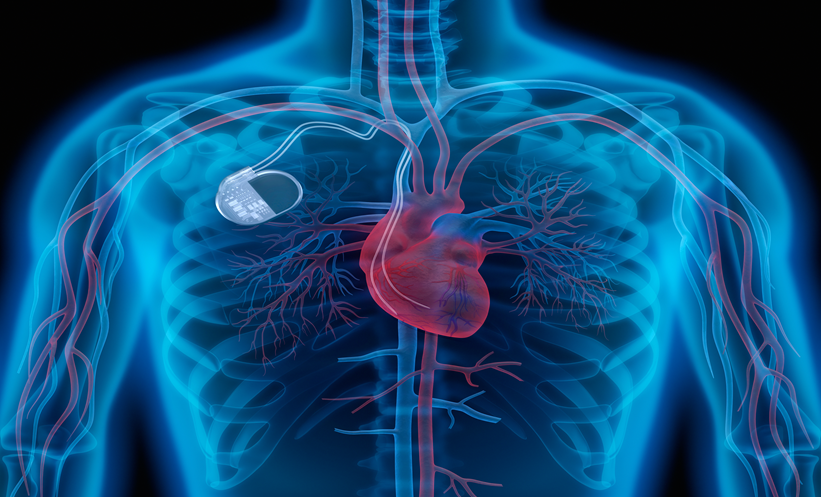AIMS
Permanent pacemaker implantation (PPMI) is the most common complication after transcatheter aortic valve implantation (TAVI). New-generation TAVI devices, despite their improved outcomes concerning paravalvular aortic regurgitation and vascular access complications, have remaining high pacemaker implantation rates. There is evidence of an association between chronic right ventricular pacing and the occurrence of heart failure in non-TAVI patients based on the MOST1 and DAVID2 trials; it is believed that this may be translated to the outcomes of elderly patients with PPMI after TAVI. The impact of PPMI on mortality and clinical outcome in TAVI patients is still a matter of debate, and data on new generation devices in this regard are scarce. Therefore, the authors sought to analyse the influence of PPMI after TAVI with new generation devices on mortality as well as on clinical outcome in a large all-comers patient collective within a 12-month period.
METHODS AND RESULTS
We enrolled 683 consecutive patients undergoing transfemoral TAVI for treatment of symptomatic severe aortic stenosis. Implantation took place between February 2014 and September 2016. Patients with pacemakers prior to TAVI were excluded from the analysis, leaving 607 patients for evaluation. Baseline characteristics of patients with PPMI or without PPMI after TAVI were compared, along with clinical outcomes after hospital discharge at 30 days and 1 year, with the primary endpoint being all-cause mortality. We further evaluated secondary endpoints, a combined endpoint of major adverse events (MAE), including cardiac and cerebral events, bleeding complications, and valve function-related events, as well as rehospitalisation due to valve-related symptoms and heart failure. Follow-up was obtained by a clinical visit or by phone contact.
The implanted new-generation TAVI devices were the balloon-expandable Edwards SAPIEN 3 valve (ES3) (Edwards Lifesciences, Irvine, California, USA) (58.5%), the mechanically expanded LOTUS™ and LOTUS™ Edge valve (Boston Scientific, Marlborough, Massachusetts, USA) (37.1%), and the self-expandable CoreValve Evolut R (Medtronic, Minneapolis, Minnesota, USA) (4.4%). PPMI became necessary in 165 patients (24.2% of the overall population). Baseline characteristics of patients were comparable between both groups. The rate of the LOTUS valve was significantly higher in patients who had PPMI after TAVI (59.4% versus 28.7%; p<0.01), whereas the rate of the ES3 valve was significantly higher in patients without PPMI after TAVI (66.1% versus 38.2%; p<0.01). There was no significant difference in 30-day and 1-year outcomes concerning all-cause mortality (PPMI versus no-PPMI, 30-days: 0.6% versus 0.9%; p=0.71; 1-year: 10.4% versus 12.0%; p=0.61), rate of the combined endpoint of adverse events (30 days: 2.4% versus 3.9%; p=0.39; 1 year: 21.7% versus 22.9%; p=0.76), or the need for rehospitalisation (30 days: 1.8% versus 2.8%; p=0.51; 1 year: 15.2% versus 15.8%; p=0.87).
Since the potential negative effect of right ventricular pacing is more likely to be serious in patients with reduced ejection fraction, a subanalysis of patients with a reduced ejection fraction of <45.0% was conducted. In this group, there was no statistically significant difference in outcome concerning all-cause mortality (PPMI versus no-PPMI: 11.1% versus 15.7%; p=0.56) or rate of the combined endpoint of adverse events, which showed a numerical difference, although this was not statistically significant, potentially because of the small number of patients with EF <45.0% (no-PPMI versus PPMI: 14.8% versus 26.5%; p=0.21).
Furthermore, we conducted a multivariate logistic regression analysis including known or assumed risk factors of 1-year all-cause mortality, and this did not reveal PPMI to be independently associated with 1-year mortality (odds ratio: 0.79; 95% confidence interval: 0.41–1.54; p=0.49).
CONCLUSION
In our large cohort of TAVI patients treated with the new generation devices, PPMI after TAVI did not have an impact on all-cause mortality, rate of a combined endpoint of adverse events, hospitalisation due to valve-related symptoms, or heart failure within a 1-year follow-up. However, since the potential negative impact of PPMI on outcomes after TAVI might need more time to become obvious, longer follow-ups are necessary to come to a definite conclusion on this matter. These data are important, since with the tendency towards the treatment of younger and lower-risk patients the impact of PPMI on outcome needs to be considered in the discussion on whether or not to treat these new patient groups with TAVI.








